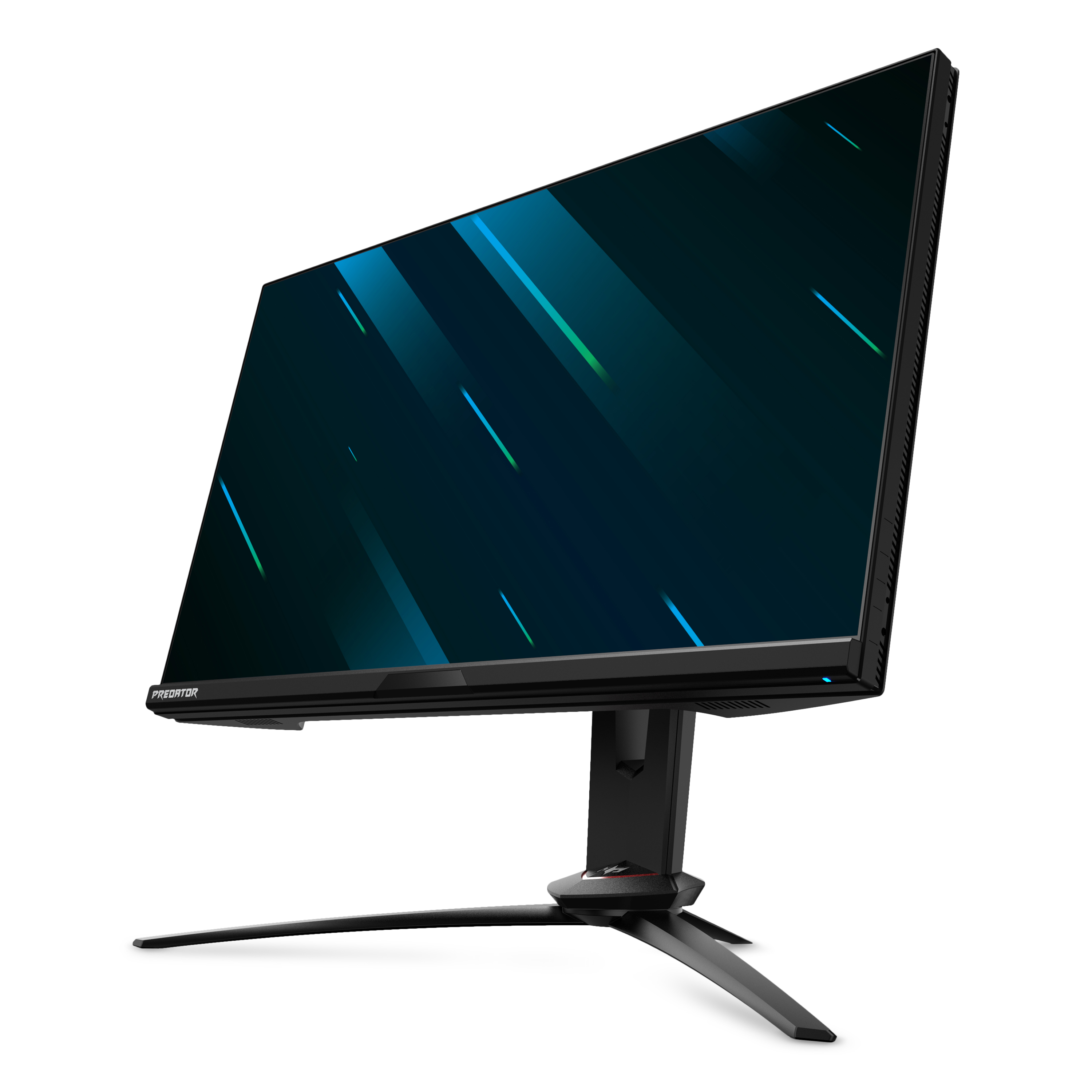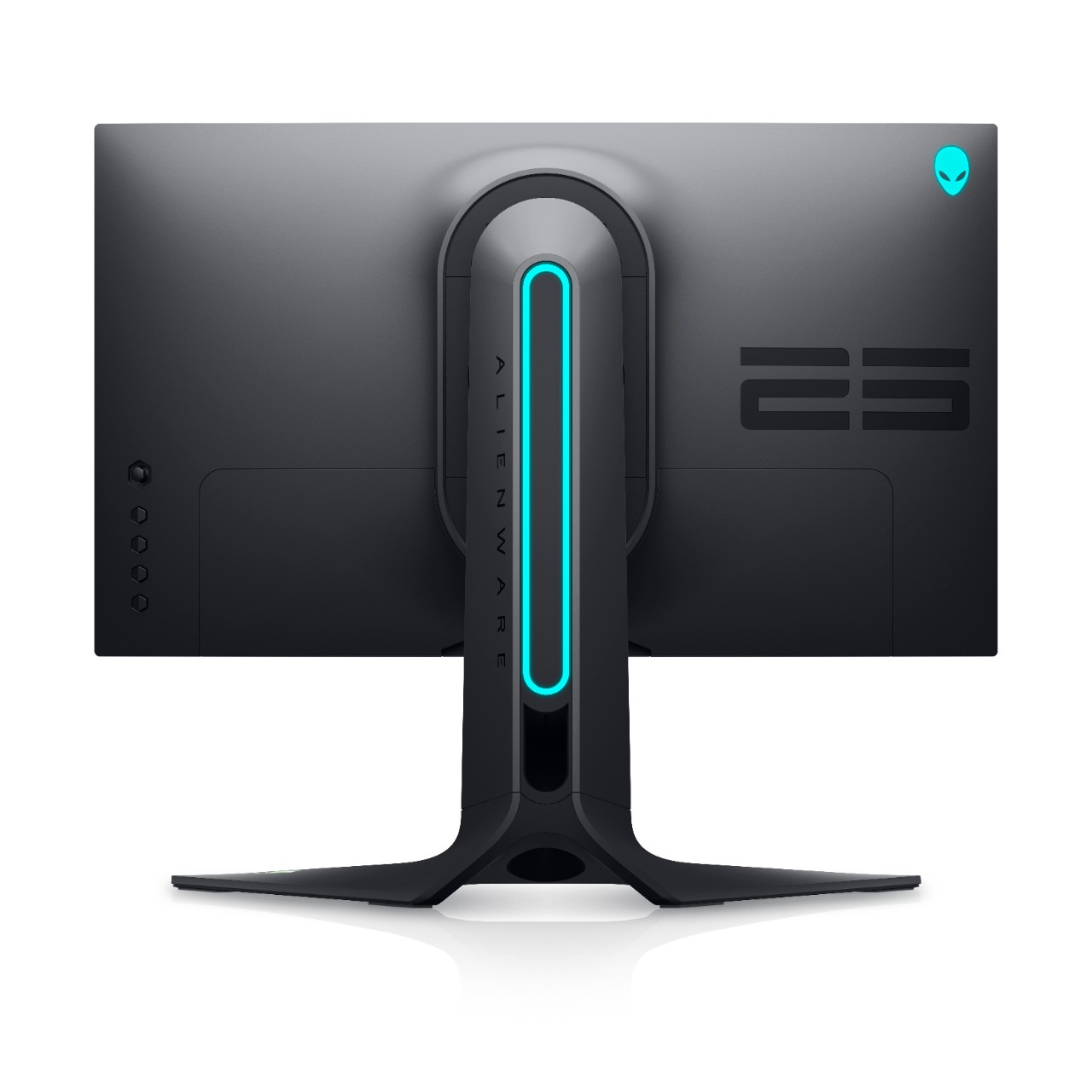Acer, Alienware, Asus 360Hz Monitors Get Built-In Nvidia Latency Testers Ahead of Fall Release
Speed you can see

We’ve been promised a lot of new technology this year, some of which is just now starting to make its way from promise to actual product. Nvidia today announced its next-generation RTX 30-series GPUs, ushering in the possibilities of more advanced graphical feats. It makes sense, then, that Acer’s and Alienware’s 360Hz gaming monitors, which will each require a powerful graphics card to make the most out of its high refresh rate, are getting their final touches.
In case you lost track after 144 Hz, 360 Hz will be the new high bar for gaming monitor refresh rates. Today’s best gaming monitors can only make it to 240 Hz. We’ve seen gaming laptops this year boast 300 Hz refresh rates, but upcoming 360 Hz screens like the Predator X25 and Alienware 25 Gaming Monitor (AW2521H) are pushing the envelope, your graphics card’s abilities and, presumably, the limits of your wallet.
Acer first announced the Predator X25 in June, but today it confirmed that the monitor’s coming out this fall with a 360 Hz refresh rate and 1ms (GTG) response time. Asus also confirmed these specs with its ROG Swift 360Hz PG259QN and ROG Swift PG25QNR that comes with a desk clamp.

Acer additionally confirmed a suspicion we had: The Acer Predator X25 will use an IPS panel. That should lend to good viewing angles, making it easy to share the monitor or view it from the side. IPS panels also tend to have strong colors, and Acer’s claiming 99% coverage of the sRGB color space with the Predator X25.
We also now seem to know that all upcoming 360Hz gaming monitors are using the same IPS panels. During a GeForce announcement today, Nvidia CEO Jensen Huang pointed to 360 Hz, IPS panels with G-Sync arriving from Asus, Acer, Dell and MSI this fall.

So who really needs a 360 Hz monitor? Again, you’ll need a beefy graphics card to hit 360 frames per second (fps). Even 240 fps today is mostly limited to eSports games, such as Overwatch and CS:GO, at low settings. For times when your graphics card can’t keep up with the monitor’s refresh rate, the monitor uses Nvidia G-Sync to fight screen tearing. AMD graphics card users, on the other hand, are seemingly out of luck in that regard, as there’s no FreeSync support.
We went hands-on with Asus’ 360 Hz monitor at CES in January, and its high refresh smoothed the appearance of a DOTA map scrolling by very quickly. On a 240 Hz monitor, the characters’ names were illegible, but the text was definitely more readable on the 360 Hz screen.
Get Tom's Hardware's best news and in-depth reviews, straight to your inbox.
Integrated Nvidia Reflex Latency Analyzer
Nvidia has claimed that competitive gamers can see a 4% improvement in relative flick shot when moving from 240 Hz monitor to 360 fps on a 360Hz monitor. Now, it wants you to be able to measure these small miracles by using the Nvidia Reflex Latency Analyzer, which will built into this year's 360 Hz monitors. The tool reads clicks from a certified mouse and measures how long it takes for the monitor to change in response, such as displaying a gun muzzle flash. This allows you to monitor end-to-end latency via the monitor's on-screen display (OSD). Of course, you'll need an Nvidia graphics card to use the feature.
"[Nvidia Reflex Latency Analyzer] is great for quickly identifying any issues with hardware setups and for comparing future peripherals, especially for competitive gamers. This might give a really good indicator of what your next upgrade should be," Steven Funcke, Asus technical marketing manager, said during a press event today.
The Acer Predator X25 will have Nvidia Reflex built in, as will the Alienware AW2521H and Asus ROG Swift PG259QNR (the 360 Hz PG259QN will not have the analyzer). Nvidia also pointed to an MSI 360Hz screen having it integrated as well.

“This type of measurement has been virtually impossible for gamers to do before now, requiring over $7,000 in specialized high-speed cameras and equipment,” Acer claimed in its announcement today. “Reflex Latency Analyzer provides much more complete and accurate understanding of mouse, PC and display performance. Now with Reflex Latency Analyzer, gamers can start a match with confidence, knowing their system is operating exactly as it should be.”
However, $7,000 is a bit of a stretch. For 1080p monitors, a Bodnar analyzer can cost about $200, but only measures signal lag, not control lag. You could also use a photo sensor and oscilloscope for around $7,000. But for our testing, we use a Casio Exilim EX-ZR100 camera that was around $300. We do a frame-by-frame analysis and count the number of milliseconds between mouse input and an image's appearance, plus the top-to-bottom draw time for each frame (you can learn more in our How We Test PC Monitors article). Still, there’s no counting necessary with Nvidia’s built-in tool, and you get more information.
Editor's note: This article was updated with additional information from an Asus press event.

Scharon Harding has over a decade of experience reporting on technology with a special affinity for gaming peripherals (especially monitors), laptops, and virtual reality. Previously, she covered business technology, including hardware, software, cyber security, cloud, and other IT happenings, at Channelnomics, with bylines at CRN UK.